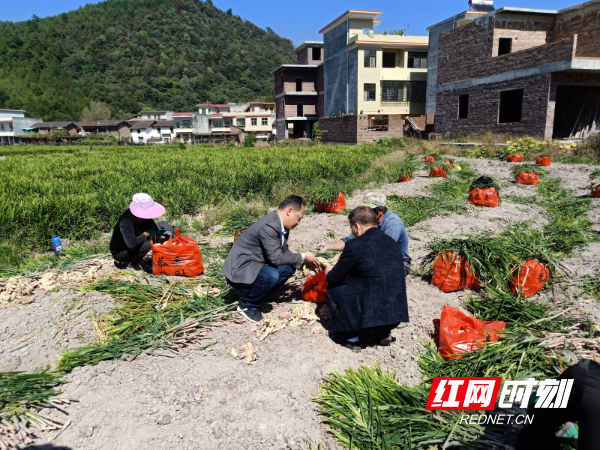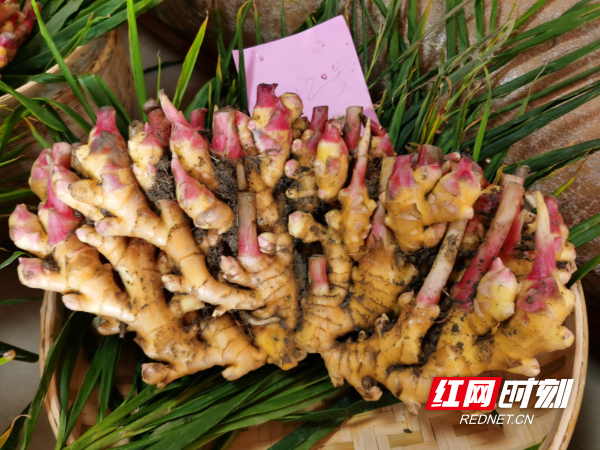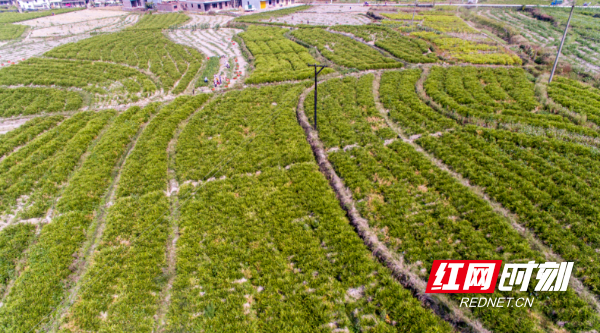Small yellow ginger, big Maqiao future
2023-03-24
In Maqiao Town, Rucheng County, Chenzhou City, Hunan Province, farmers have for days been busy sun-drying, disinfecting, and sprouting their stored small yellow ginger, preparing for the planting, storage, and sale of this year’s harvest.
Small yellow ginger, the local cash cow, has also been planted in 13 other towns of Rucheng County now. In recent years, Maqiao Town has been enhancing its reputation as the hometown of small yellow ginger, and promoting specialty agriculture in efforts to increase people’s income and realize rural revitalization.

The 40-year-old traditional small yellow ginger industry is fast evolving thanks to the establishment of the cold chain distribution center, the introduction of “tumor-free and disease-free ginger seed cultivation” technology, and the adoption of modern agricultural production methods integrating cultivation, pest control, processing, logistics, and sales.
Abandoned farmlands have become a pressing issue for the development of the industry as many young people leaving for work elsewhere are unable to cultivate them. In Waisha Village, Maqiao Town, the villagers’ council, therefore, formulated village regulations based on public opinion that would allow it to fine those who abandon crop fields. The fines collected have been invested in infrastructure construction, such as small-scale water infrastructure, machine-cultivating roads, and small hillside ponds.

The townscape of Maqiao has undergone tremendous changes as the small yellow ginger industry has brought well-developed infrastructure to various villages. In recent years, Maqiao Town has focused on standardizing rural housing construction, demolishing dilapidated houses, and improving the living environment. In 2022, for example, it demolished 39,000 square meters of old and dangerous buildings, leveled 16,000 square meters of land, and transformed 55 rural toilets. Besides, every month the villages are evaluated for their environmental hygiene and “clean village” selection activities are held.





